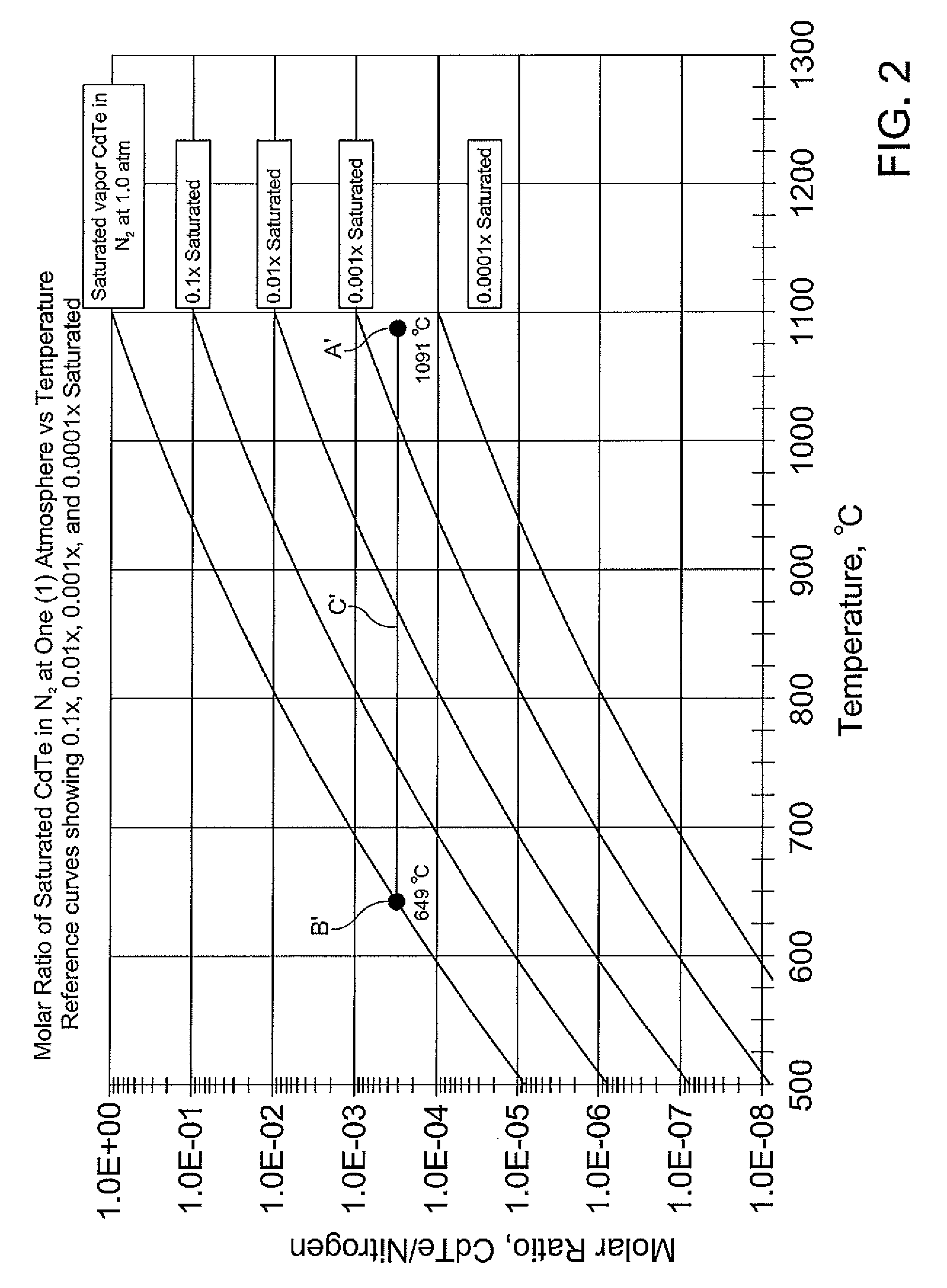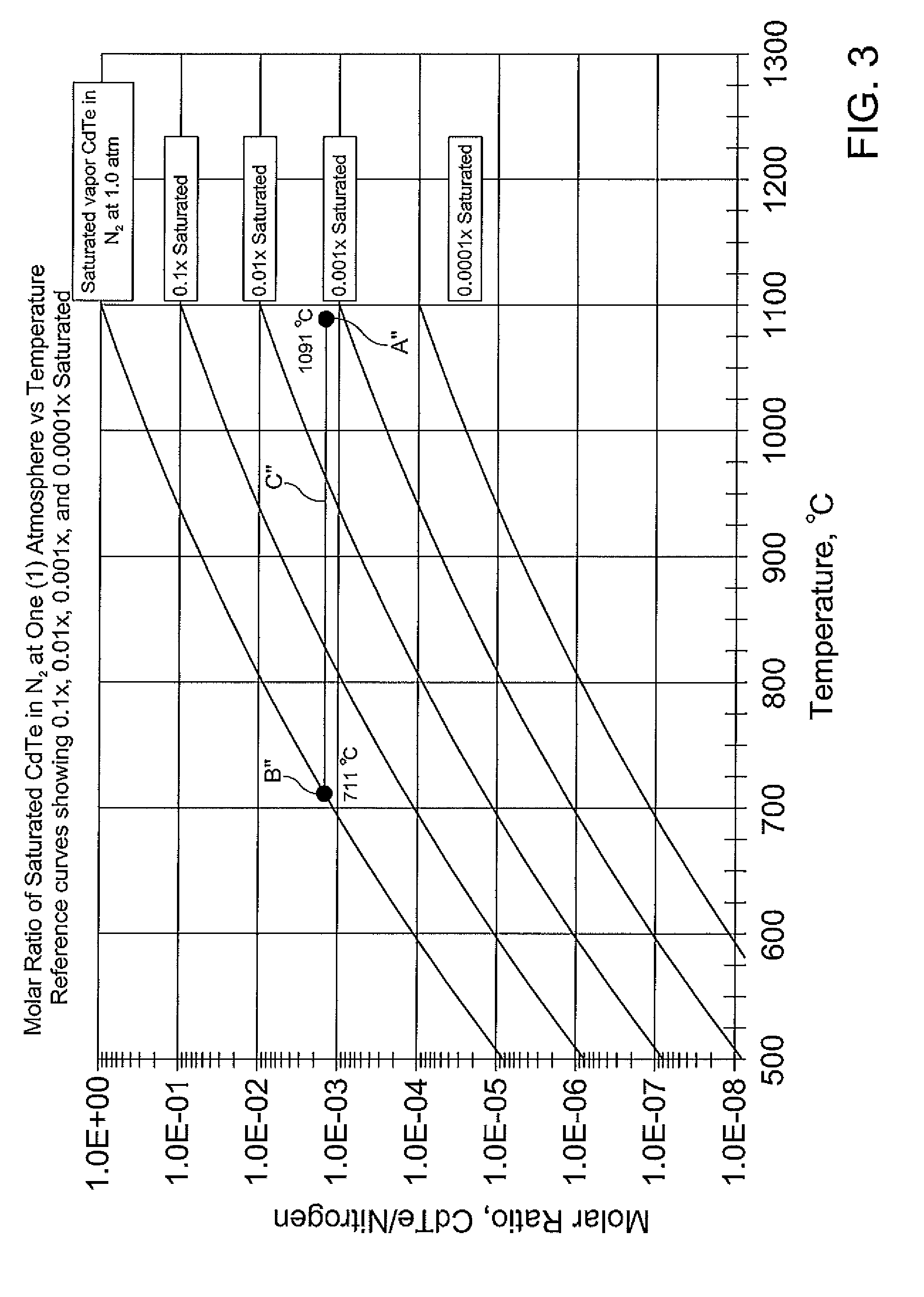Atmospheric pressure chemical vapor deposition with saturation control
a chemical vapor deposition and atmospheric pressure technology, applied in chemical vapor deposition coatings, vacuum evaporation coatings, coatings, etc., can solve problems such as loose dust formation, and achieve the effects of minimizing the vapor phase nucleation of semiconductor materials, maximizing the quality of thin-film formation, and minimizing production costs
- Summary
- Abstract
- Description
- Claims
- Application Information
AI Technical Summary
Benefits of technology
Problems solved by technology
Method used
Image
Examples
Embodiment Construction
[0018]Individually metered masses of semiconductor material, preferably cadmium sulfide (CdS) or cadmium telluride (CdTe) in powdered form, are introduced into a zone which is continuously purged by a stream of inert gas, preferably nitrogen, flowing between an inlet and an outlet at approximately atmospheric pressure. The powder is carried from the inlet, by the inert gas flowing at a controlled rate, into a heated vessel in which the powder is sublimated. The heated vessel is designed so that a fluid may be passed therethrough, and heated to a desired and controlled temperature as it passes therethrough. The desired temperature is a temperature at which the semiconductor material will vaporize. The heated vessel may be a heated packed bed, as desired. The powdered semiconductor material is sublimated in the inert gas in a heated packed bed as it passes through the interstitial voids between the media of the packed bed. The outlet of the heated vessel is caused to flow into the int...
PUM
| Property | Measurement | Unit |
|---|---|---|
| molar ratio | aaaaa | aaaaa |
| molar ratio | aaaaa | aaaaa |
| molar ratio | aaaaa | aaaaa |
Abstract
Description
Claims
Application Information
 Login to View More
Login to View More - R&D
- Intellectual Property
- Life Sciences
- Materials
- Tech Scout
- Unparalleled Data Quality
- Higher Quality Content
- 60% Fewer Hallucinations
Browse by: Latest US Patents, China's latest patents, Technical Efficacy Thesaurus, Application Domain, Technology Topic, Popular Technical Reports.
© 2025 PatSnap. All rights reserved.Legal|Privacy policy|Modern Slavery Act Transparency Statement|Sitemap|About US| Contact US: help@patsnap.com



